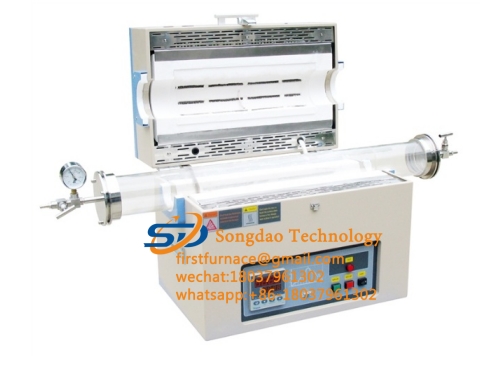- 28
- Oct
How to detect the thickness of the lining of the high temperature experimental electric furnace?
How to detect the thickness of the lining of the high temperature experimental electric furnace?
1. Capacitance method
The capacitance method is similar to the resistance method. A coaxial circular capacitor sensor is embedded inside the furnace lining, and the capacitance value corresponds to its length. The thickness of the blast furnace masonry can be determined by measuring the capacitance value.
2. Gravity wave method
Gravity wave signals are highly sensitive to structural defects. When gravity waves propagate in the medium, such as holes, cracks and other interface discontinuities, reflection, refraction, scattering and mode conversion will occur, using the characteristics of gravity waves The thickness of the stave material can be determined.
3. Resistance method
The resistance element is embedded in the furnace lining, the front end of the sensor is aligned with the inner surface of the furnace lining, and it is connected to the measurement system through a lead wire. The resistance value of the resistance element is related to its length. As the resistance element and the furnace lining lose synchronously, the resistance will change. Use the corresponding measurement The meter measures the electrical signal output by the component, and then the remaining thickness of the furnace lining can be measured online.

4. Heat flow detection method
According to thermodynamics, temperature difference, thermal conductivity and furnace wall thickness determine the heat flow intensity. For blast furnace lining, the thermal conductivity is fixed, and the furnace wall thickness can be obtained from the temperature difference and heat flow intensity.
The heat flow detection sensor is installed in the lower temperature part of the furnace lining. The heat flow intensity is calculated through the water temperature difference of the cooling wall of the hearth, and the temperature value measured by the thermocouple in the brick lining is combined to calculate the thickness of the furnace wall.
5. Ultrasonic method
The thickness measurement is carried out by using the characteristics of ultrasonic propagation in a solid medium. At a certain temperature, ultrasonic waves enter the furnace lining and enter the furnace, and the propagation time of ultrasonic incident and reflection in the furnace lining is used to obtain the residual thickness of the furnace lining.
6. Multi-head thermocouple method
Several thermocouples of different lengths are installed in a protective sleeve, and then installed in the brick lining that needs to be inspected, and the erosion of the masonry can be inferred by measuring the temperature change of each thermocouple. When the temperature of each point and the temperature gradient between each point are basically stable, when the brick lining is gradually eroded to a certain part, the galvanic couple of this part will be destroyed, and the temperature signal will be abnormal.
7. Model inference method
It uses thermocouples as detection elements, applies thermodynamics and other theories to establish a mathematical model of the hearth and furnace bottom temperature site, and calculates the approximate positions of the molten iron solidification line and carbon brick erosion line through software programming and numerical analysis.
